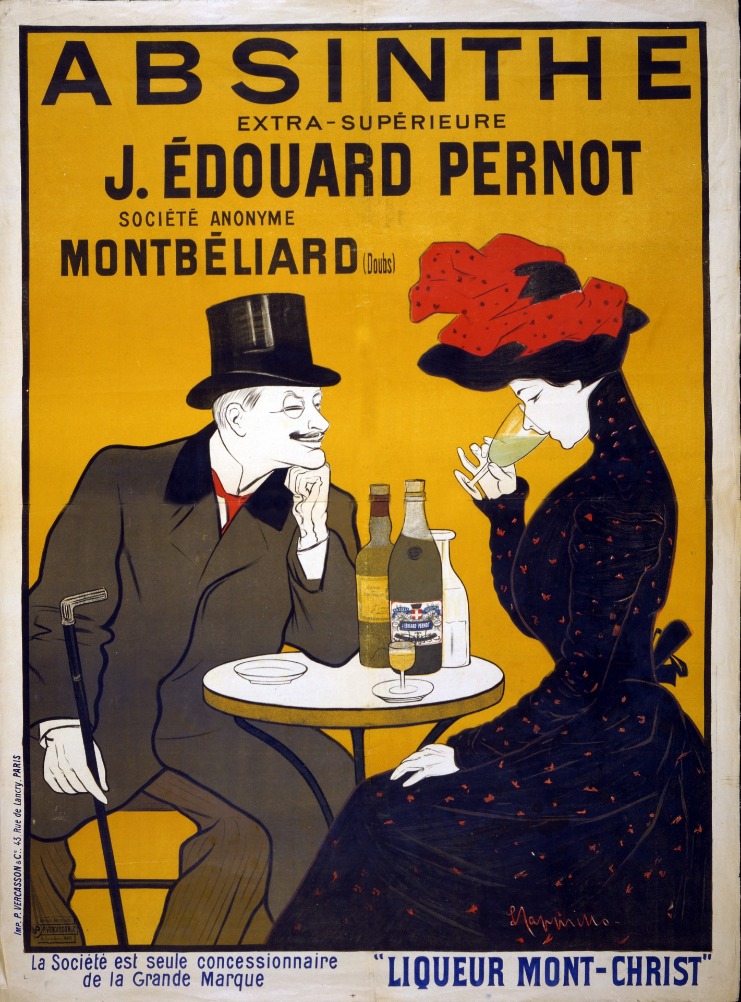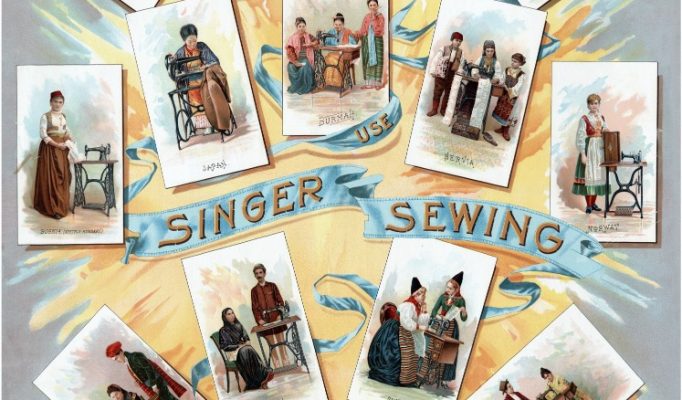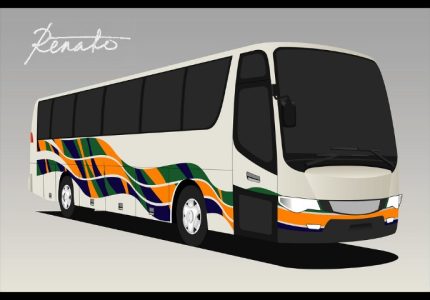Understanding Graphic Design Advertising
Graphic design advertising plays a crucial role in capturing audience attention and communicating brand messages effectively. It combines visual elements, typography, and layout to create compelling advertisements that stand out in a crowded marketplace. Understanding the fundamentals of graphic design advertising helps businesses craft impactful campaigns that resonate with their target audience and drive engagement.
Definition and Purpose
Graphic design advertising is the art of creating visual content to communicate messages effectively to a target audience. It combines text, images, and layout to craft compelling advertisements that capture attention and convey a brand’s message clearly. The purpose of graphic design advertising is to promote products, services, or ideas in a visually appealing manner that influences consumer behavior and enhances brand recognition. By using strategic design elements, advertisers aim to evoke emotions, build trust, and motivate action, making it a vital component of marketing and branding efforts.
Importance in Marketing
Graphic design advertising plays a crucial role in marketing by visually capturing the target audience’s attention and conveying essential messages effectively. It combines creativity and strategic communication to create memorable ads that resonate with viewers and reinforce brand identity. Well-designed advertising graphics can differentiate a product or service in a crowded marketplace and influence consumer behavior. The importance of graphic design in marketing lies in its ability to communicate complex ideas quickly, evoke emotions, and build trust with potential customers. As a cornerstone of visual marketing strategies, graphic design advertises brands in a way that is both compelling and persuasive, ultimately driving sales and fostering brand loyalty.
Elements of Effective Graphic Design Advertisements
Effective graphic design advertisements are essential for capturing attention and conveying messages clearly. They combine visual elements such as color, typography, images, and layout to create compelling and memorable messages. A well-designed advertisement not only attracts viewers but also persuades them to take action, making it a powerful tool in marketing and branding strategies.
Typography
Effective graphic design advertisements rely heavily on thoughtful typography to communicate messages clearly and attract attention. Choosing the right fonts helps establish the tone and mood of the ad, whether it be professional, playful, or urgent. Proper hierarchy in typography ensures that the most important information stands out, guiding viewers effortlessly through the content. Consistency in font choices and sizes maintains visual coherence, reinforcing brand identity. Additionally, the alignment, spacing, and contrast of type elements enhance readability and aesthetic appeal, making the advertisement memorable and impactful.
Color Schemes
Effective graphic design advertisements rely on several key elements to capture attention and communicate the intended message clearly. These include a strong visual hierarchy, balanced layout, clear focal points, and consistency in style. Using appropriate imagery and typography enhances readability and aesthetic appeal, making the advertisement memorable.
Color schemes play a vital role in creating impactful graphic design advertisements. The choice of colors can evoke emotions, influence perceptions, and convey brand identity. Complementary and analogous color schemes often provide harmony, while contrasting colors create visual interest and highlight important elements. Understanding color psychology and selecting a palette that aligns with the message and target audience are essential for an effective ad. Additionally, using colors consistently reinforces brand recognition and strengthens the overall design cohesion.

Imagery and Graphics
Effective graphic design advertisements rely heavily on well-chosen imagery and graphics to capture attention and communicate their message clearly. The right visuals can evoke emotions, illustrate key ideas, and enhance overall message retention, making the ad memorable and impactful.
- High-quality, relevant images that resonate with the target audience
- Bold and eye-catching graphics that highlight the main message
- Consistent color schemes that align with brand identity
- Use of contrast to emphasize important elements
- Simple and uncluttered layouts that avoid distractions
- Visual hierarchy to guide viewers through the ad effortlessly
- Incorporation of white space to improve readability and focus
- Creative use of imagery to tell a story or evoke emotion
Branding Consistency
Effective graphic design advertisements rely on the careful selection of visual elements to capture attention and communicate a clear message. Key components include strong imagery, balanced composition, harmonious color schemes, and legible typography. These elements work together to create visually appealing ads that resonate with the target audience and evoke the desired emotions.
Branding consistency is essential in graphic design advertisements as it helps establish and reinforce brand identity. Consistent use of logos, colors, fonts, and messaging across all advertising materials ensures recognition and builds trust with consumers. Maintaining uniformity across various platforms strengthens brand presence and contributes to a cohesive brand image that supports long-term marketing success.
Types of Graphic Design Advertisements
Graphic design advertisements come in various forms, each tailored to capture attention and communicate a message effectively. These types include print ads, digital banners, social media graphics, posters, billboards, and packaging designs. Understanding the different categories helps businesses choose the most suitable approach to reach their target audience and enhance brand visibility.
Print Ads
Print advertisements are a significant category within graphic design advertising, showcasing a variety of formats and styles to effectively communicate a message. These include magazine ads, newspaper ads, posters, brochures, and flyers, each tailored to reach different audiences and contexts. Magazine ads often feature eye-catching visuals combined with compelling headlines to attract readers’ attention. Newspaper ads typically focus on concise messaging due to space constraints, utilizing bold text and striking images. Posters serve as large-format ads suitable for public spaces, emphasizing bold graphics and minimal text for quick impact. Brochures and flyers are used for detailed product or service information, combining visuals and text in an engaging layout. Overall, print ads in graphic design aim to combine aesthetic appeal with clear messaging to influence the target audience effectively.
Digital Banners
Digital banners are a popular form of graphic design advertisements used to capture the attention of online audiences. These visual ads come in various formats, including static banners, animated banners, and interactive banners, each designed to engage viewers differently. Static banners are simple images that deliver straightforward messages, while animated banners use movement to attract attention and convey more complex ideas. Interactive banners offer viewers the chance to engage directly with the ad through clicks or hover actions, increasing engagement and conversion rates. Overall, digital banners are essential tools in modern advertising, providing versatile and impactful ways to promote products and services online.
Social Media Graphics
Social media graphics are a vital component of graphic design advertisements, crafted specifically to engage audiences across platforms such as Instagram, Facebook, Twitter, and LinkedIn. These types of advertisements include eye-catching banners, promotional posts, story graphics, and ad images designed to convey messages quickly and effectively. They often utilize bold visuals, concise text, and brand consistency to attract attention and encourage user interaction. The diverse formats and styles help brands reach their target demographic, build brand awareness, and boost campaign effectiveness in the digital space.
Video Advertisements
Graphic design advertisements encompass a variety of visual marketing tools aimed at capturing audience attention and conveying messages effectively. They include print ads, digital banners, posters, and social media graphics, all designed to communicate brand identity and promotional content visually. These advertisements rely on color, typography, images, and layout to create impactful designs that resonate with viewers.
Video advertisements are dynamic forms of graphic design advertising that incorporate moving visuals, sound, and storytelling to engage audiences more deeply. These include television commercials, online video ads, and social media video campaigns. They leverage animation, motion graphics, and cinematography to illustrate messages, showcase products, or evoke emotional responses, making them highly effective in modern advertising strategies.
Design Principles for Advertisement Graphics
Effective advertisement graphics rely on core design principles to capture attention and communicate a message clearly. Balancing visual elements such as color, typography, and layout ensures that the advertisement resonates with the target audience. By adhering to these principles, designers can create compelling visuals that elevate brand recognition and drive engagement.
Balance and Layout
Effective advertisement graphics rely heavily on strong design principles such as balance and layout to capture attention and convey the intended message clearly. Balance in ad design involves distributing visual weight evenly across the composition, creating a sense of stability and harmony that guides the viewer’s eye naturally through the content. There are three main types of balance: symmetrical, asymmetrical, and radial, each serving different stylistic and communicative purposes.
Layout refers to the arrangement of visual elements within the advertisement, including images, text, and whitespace. A well-organized layout enhances readability, emphasizes key messages, and directs viewers’ focus strategically. Using a grid system or visual hierarchy helps in maintaining consistency and clarity, ensuring that the most important information stands out.
In graphic design for advertisements, combining balance and thoughtful layout results in visually appealing and effective graphics that not only attract attention but also deliver the intended branding message efficiently. Proper use of these principles can elevate an advert from being merely eye-catching to genuinely impactful and memorable.
Contrast and Focus
Effective advertisement graphics rely heavily on principles of contrast and focus to capture attention and convey messages clearly. Contrast helps create visual interest by distinguishing elements through differences in color, size, shape, or texture, making key components stand out. Focus directs the viewer’s eye toward the most important part of the ad, often achieved through strategic use of color emphasis, positioning, or surrounding whitespace. By balancing contrast and focus, designers can guide viewers through the advertisement seamlessly, ensuring that the main message is both noticed and memorable. Incorporating these principles thoughtfully enhances overall visual hierarchy and effectiveness of promotional graphics.
Hierarchy and Readability
Effective advertisement graphics hinge on clear hierarchy and readability to capture attention and communicate the message efficiently. Establishing visual hierarchy involves prioritizing elements such as headlines, images, and calls-to-action through size, contrast, and placement, guiding viewers’ eyes naturally through the content. Readability is achieved by selecting appropriate fonts, sizes, and colors that contrast well with the background, ensuring text is easy to read at a glance. Simplicity in design prevents clutter, allowing the main message to stand out without distractions. Consistent use of brand colors and visual styles reinforces brand recognition and coherence across the advertisement. Ultimately, a well-structured layout with balanced elements enhances viewer engagement and effectively conveys the intended message.
White Space Utilization
Effective advertisement graphics heavily rely on the thoughtful use of design principles, particularly white space utilization. White space, also known as negative space, refers to the empty areas surrounding and between visual elements. Proper use of white space enhances readability and helps direct the viewer’s focus toward the key messages and call-to-action. It creates a sense of balance and prevents the design from appearing cluttered or overwhelming. Strategic white space placement can improve overall aesthetics, making the advertisement more appealing and easier to comprehend. By giving elements room to breathe, designers can emphasize important features, establish hierarchy, and generate a clean, professional look that resonates with the target audience.
Tools and Software for Creating Advertising Graphics
Creating compelling advertising graphics requires the right tools and software that enable designers to bring their ideas to life with creativity and precision. Whether for digital campaigns or print media, the appropriate software can streamline the design process, enhance quality, and make it easier to produce eye-catching visuals that capture audience attention. In the world of graphic design advertising, staying equipped with the latest tools is essential for producing professional and impactful graphics.
Adobe Photoshop
Adobe Photoshop is a leading tool for creating advertising graphics, offering a comprehensive set of features that enable designers to craft visually compelling designs. Its advanced image editing capabilities, such as layering, masking, and selection tools, allow for precise manipulation of images needed for impactful advertisements. Photoshop’s extensive library of brushes, filters, and effects helps in adding creative elements and enhancing visual appeal. Additionally, its compatibility with other Adobe Creative Cloud applications streamlines the workflow for designers, making it easier to integrate graphics into larger advertising campaigns. Overall, Photoshop remains an essential software for graphic designers aiming to produce high-quality, attention-grabbing advertising visuals.
Adobe Illustrator
Adobe Illustrator is a powerful and versatile tool widely used by graphic designers to create advertising graphics that are visually compelling and professionally polished. Its vector-based environment allows designers to craft scalable illustrations, logos, and visual assets that maintain high quality across various sizes and formats. Illustrator offers a comprehensive suite of features, including advanced pen and shape tools, typography options, and color management, enabling users to produce detailed and vibrant graphics tailored for advertising campaigns. Its integration with other Adobe Creative Cloud applications streamlines the creative workflow, making it an essential tool for developing eye-catching promotional materials that enhance brand visibility and engagement.
Canva
Canva is a powerful and user-friendly tool for creating advertising graphics that appeal to a wide range of users. It offers an extensive library of templates, fonts, images, and design elements, making it easy to craft professional-looking visuals without extensive design experience. Canva’s drag-and-drop interface simplifies the creative process, allowing marketers and advertisers to quickly produce eye-catching graphics for social media, banners, flyers, and more. Additionally, its collaboration features enable teams to work together seamlessly, ensuring consistency and efficiency in advertising campaigns. Overall, Canva is an essential software for effective graphic design advertising, providing accessible yet versatile tools to bring marketing ideas to life.
Figma
Figma is a leading tool for creating advertising graphics, renowned for its collaborative features and user-friendly interface. It allows designers to develop, share, and iterate on visual concepts quickly, making it ideal for advertising campaigns that require teamwork and flexibility. With its cloud-based platform, Figma enables real-time collaboration, feedback, and version control, enhancing efficiency in the design process. Additionally, Figma offers a wide range of design resources, plugins, and integrations with other software, streamlining the creation of eye-catching advertising graphics that effectively communicate brand messages and engage audiences.
Strategies for Effective Advertising Campaigns
Effective advertising campaigns are essential for capturing audience attention and driving brand success. When it comes to graphic design advertising, creative visuals combined with strategic planning can significantly enhance message delivery. By employing innovative design techniques, understanding target demographics, and utilizing multi-channel approaches, advertisers can create compelling campaigns that resonate with viewers and leave a lasting impression.
Knowing the Target Audience
Understanding your target audience is crucial for creating effective advertising campaigns, especially in graphic design. By analyzing demographics, preferences, and behaviors, you can tailor visuals that resonate and capture attention. Developing a clear profile of your ideal customer helps in selecting color schemes, typography, and imagery that evoke the desired emotional response. Utilizing data-driven insights allows for more precise messaging and enhances engagement. Additionally, testing different design elements with focus groups or A/B testing can refine your approach, ensuring your graphic advert effectively communicates your value proposition to the right audience.
Clear Call-to-Action
Creating an effective advertising campaign in graphic design requires a combination of visually appealing elements and a strong, clear call-to-action. To capture attention, use bold colors, compelling imagery, and a consistent design style that aligns with your brand identity. Ensure your message is concise and impactful, making it easy for viewers to understand the benefit of your product or service at a glance.
A clear call-to-action is essential to guide your audience toward the next step, whether it’s visiting a website, making a purchase, or signing up for a newsletter. Use action-oriented words such as “Discover,” “Join,” “Get Started,” or “Learn More” and position the CTA prominently within your graphic design. Combining effective visuals with a persuasive CTA will increase engagement and drive your campaign’s success.
Consistent Branding
Effective advertising campaigns in graphic design rely on a clear strategy that combines creativity with consistency. Developing a compelling visual narrative that resonates with the target audience is essential for capturing attention and conveying the brand message. Utilizing eye-catching graphics, color schemes, and typography ensures the advertisement stands out and remains memorable. Consistent branding across all advertising materials helps reinforce brand identity, fostering trust and recognition among consumers. Regularly reviewing and adapting campaign elements based on performance data ensures sustained relevance and engagement, making the marketing effort more effective over time.
Integrating Multiple Channels
Effective advertising campaigns that incorporate multiple channels require a strategic approach to ensure consistency and reach a broader audience. For a graphic design advert, it is essential to maintain a cohesive visual identity across all platforms, including social media, print, digital ads, and email marketing. Tailoring messages to suit each channel while preserving core branding elements, such as color schemes, typography, and imagery, enhances brand recognition and engagement. Leveraging data analytics helps identify the most impactful channels for target audiences and optimize campaign performance. Integrating storytelling through compelling visuals and messages across channels ensures a unified brand experience that resonates with viewers and encourages interaction. Additionally, coordinating campaigns across multiple channels allows for cumulative reinforcement, increasing the likelihood of campaign success and brand recall.
Case Studies of Successful Graphic Design Ads
Successful graphic design ads play a crucial role in capturing audience attention and conveying brand messages effectively. By analyzing standout examples, we gain insights into innovative visual strategies, compelling storytelling, and creative concepts that resonate with viewers. These case studies serve as valuable references for designers aiming to craft impactful advertisements that leave a lasting impression.
Brand X Campaign
The Brand X campaign is a prime example of successful graphic design advertising that effectively captured audience attention and elevated brand recognition. The campaign utilized bold colors, clean typography, and striking imagery to create a visual identity that was both memorable and impactful. By focusing on simplicity and clarity, the ad messaging was easily understood, allowing the brand to communicate its core values efficiently. The strategic use of negative space and consistent visual themes helped establish a cohesive look across multiple platforms, reinforcing brand identity. This case study demonstrates how thoughtful graphic design can significantly enhance advertising effectiveness, making Brand X’s campaign a notable success in the realm of graphic design ads.
Viral Social Media Ads
Successful graphic design ads and viral social media campaigns have transformed the way brands communicate with their audiences, often combining creative visuals with compelling messages to achieve remarkable impact.
- Nike’s “Just Do It” Campaign: This iconic campaign utilized bold typography and powerful imagery to motivate viewers, becoming a staple in advertising history and showcasing the power of minimalistic yet impactful graphic design.
- Old Spice’s “The Man Your Man Could Smell Like”: Combining humorous visuals with vibrant colors and witty text, this campaign went viral, demonstrating how creative graphic elements can boost engagement on social media.
- Instagram’s Rebranding Campaign: The introduction of a new logo and interface was accompanied by sleek, modern graphic design, generating widespread positive buzz and a viral response from users.
- Coca-Cola’s Share a Coke Campaign: Customizable bottle labels with names and bold typography created shareable moments on social media, leveraging personalized graphic design to foster emotional connections.
- ALS Ice Bucket Challenge: The campaign’s simple yet striking visuals, combined with a hashtag and viral videos, exemplified how effective graphic design can amplify social movements online.
Innovative Print Campaigns
Case studies of successful graphic design ads serve as inspiring examples of how creative visual communication can capture attention and convey powerful messages. Innovative print campaigns have revolutionized advertising by blending artistry with strategic messaging, resulting in memorable and effective advertisements. One notable example is the “Share a Coke” campaign, which personalized bottles with names, encouraging consumers to connect emotionally with the brand. Another inspiring campaign is the “Dumb Ways to Die,” which used playful and colorful illustrations to promote safety awareness, achieving viral success worldwide. These campaigns demonstrate how clever design and innovative concepts can make advertisements stand out, engage audiences, and deliver lasting impacts. Analyzing such case studies offers valuable insights into the creative process behind successful graphic design advertising and highlights the importance of originality and emotional appeal in print media.
Trends in Graphic Design Advertising
In the ever-evolving world of advertising, graphic design plays a crucial role in capturing audience attention and conveying brand messages effectively. Current trends in graphic design advertising showcase innovative techniques, bold visuals, and a focus on minimalism that help brands stand out in a crowded marketplace. As digital platforms continue to grow, designers are exploring new tools and creative approaches to create impactful and memorable advertisements.
Minimalism
Trends in graphic design advertising are continually evolving, with minimalism leading the way as a prominent style. This approach emphasizes clean lines, simple color palettes, and uncluttered layouts to convey messages more effectively. Minimalist advertising focuses on clarity and impact, allowing the core message to stand out without distractions. As consumers favor straightforward and honest communication, brands are adopting minimalism to foster a sense of trust and sophistication. Overall, minimalist trends in graphic design advertising enhance aesthetic appeal while ensuring that the message resonates quickly and clearly with audiences.
Bold Typography
Bold typography has become a defining trend in graphic design advertising, capturing attention and conveying powerful messages effectively. Advertisers are increasingly utilizing large, striking fonts to create a strong visual impact that instantly engages viewers. This approach not only enhances readability but also adds a modern, confident aesthetic to campaigns. The use of bold typography allows brands to stand out in a crowded media landscape, emphasizing key messages and brand identities. As digital platforms evolve, the trend continues to evolve with innovative typographic styles that blend minimalism with maximal impact, ensuring advertisements remain memorable and visually compelling.
Interactive Ads
Trends in graphic design advertising are continually evolving, driven by technological advancements and changing consumer preferences. Interactive ads have become a prominent feature, allowing brands to engage audiences more effectively through immersive experiences. These ads often incorporate elements like touch screens, augmented reality, and personalized content to capture attention and foster deeper connections. Additionally, minimalist designs, bold typography, and vibrant color schemes are trending to create visually striking advertisements that stand out in a crowded digital landscape. The integration of motion graphics and video content further enhances the dynamic quality of modern advertising, making campaigns more engaging and memorable. As the digital environment expands, keeping up with these trends is essential for creating compelling graphic design advertisements that resonate with audiences and drive results.
Personalization
In the evolving landscape of graphic design advertising, personalization has become a dominant trend, allowing brands to connect more authentically with their audience. By tailoring visuals and messaging to individual preferences, companies can create more engaging and relevant advertisements that resonate on a deeper level. This shift towards personalized design is facilitated by advanced data analytics and technological tools, enabling advertisers to craft targeted campaigns that stand out in a crowded marketplace. As consumers increasingly seek unique and meaningful experiences, the integration of personalization in graphic design not only enhances brand loyalty but also drives higher conversion rates. Overall, staying ahead in graphic design advertising now hinges on leveraging personalized visuals to foster stronger emotional connections with audiences.





